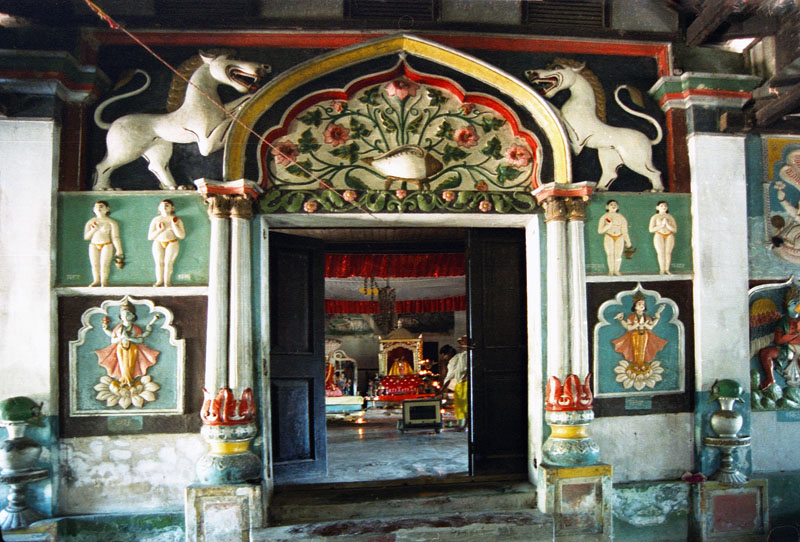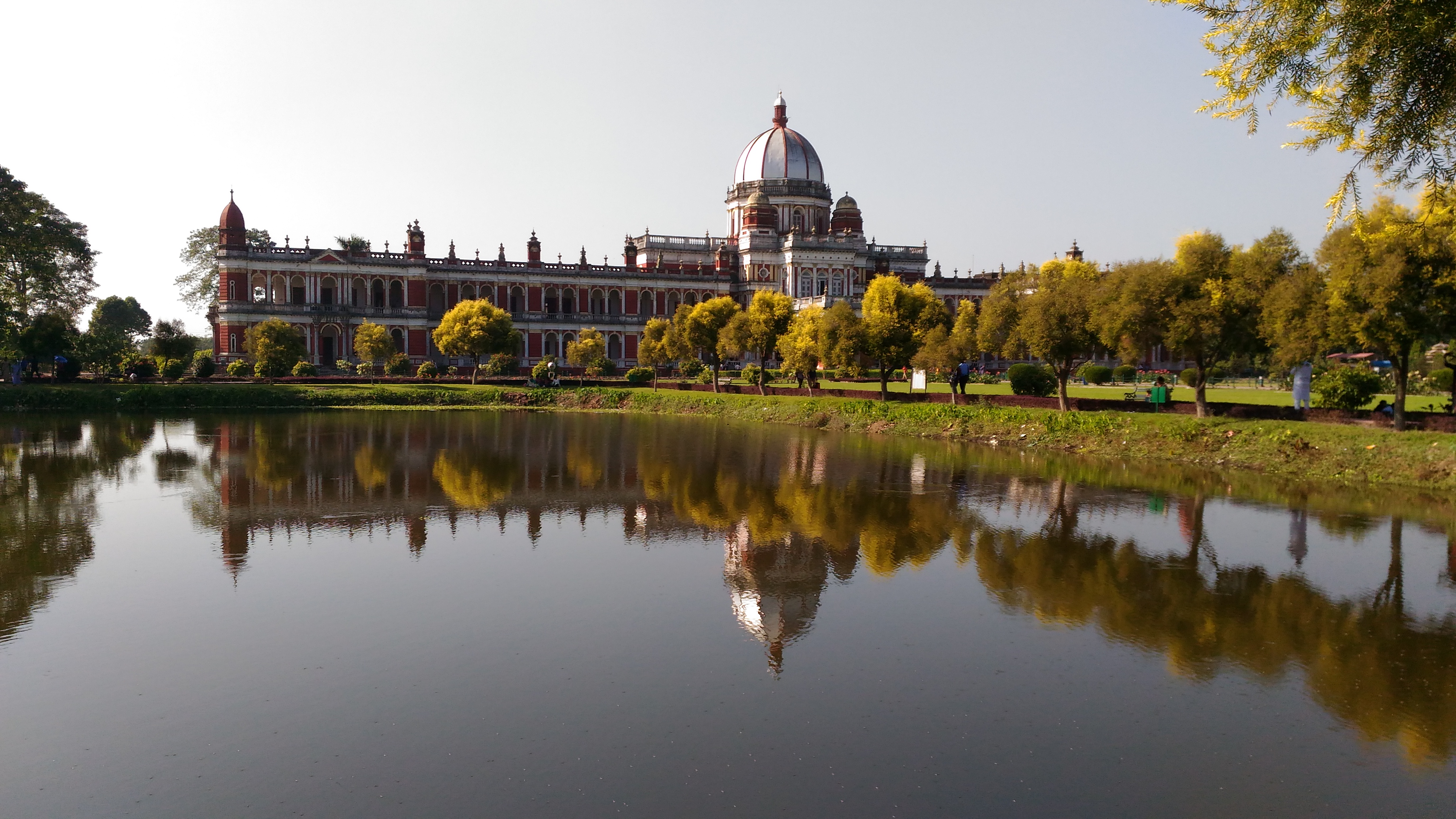|
Assamese Culture
The culture of Assam is traditionally a hybrid one, developed due to cultural assimilation of different ethno-cultural groups under various political-economic systems in different periods of its history. Historical perspective The roots of culture in Assam goes back almost five thousand years when the first wave of humans, the Austroasiatic people reached the Brahmaputra valley. They mixed with the later immigrant Tibeto-Burman and the Indo-Aryan peoples out there in prehistoric times. The last wave of migration was that of the Tai/Shan who later formed the idea of Assamese culture and its identity. The Ahoms, later on, brought some more Indo-Aryans like the Assamese Brahmins and Ganaks and Assamese Kayasthas to Assam. According to the epic ''Mahabharata'' and on the basis of local folklore, people of Assam (Kiratas) probably lived in a strong kingdom under the Himalayas in the era before Jesus Christ, which led to early assimilation of various Tibeto-Burman and Autro-A ... [...More Info...] [...Related Items...] OR: [Wikipedia] [Google] [Baidu] |
Cultural Assimilation
Cultural assimilation is the process in which a minority group or culture comes to resemble a society's Dominant culture, majority group or fully adopts the values, behaviors, and beliefs of another group. The melting pot model is based on this concept. A related term is cultural integration, which describes the process of becoming economically and socially integrated into another society while retaining elements of one’s original culture. This approach is also known as cultural pluralism, and it forms the basis of a cultural mosaic model that upholds the preservation of cultural rights. Another closely related concept is acculturation, which occurs through cultural diffusion and involves changes in the cultural patterns of one or both groups, while still maintaining distinct characteristics. There are various types of cultural assimilation, including full assimilation and forced assimilation. Full assimilation is common, as it occurs spontaneously. Assimilation can also invol ... [...More Info...] [...Related Items...] OR: [Wikipedia] [Google] [Baidu] |
Sukaphaa
Sukaphaa (), also Siu-Ka-Pha, the first Ahom kingdom, Ahom Ahom Dynasty, king in medieval Assam, was the founder of the Ahom kingdom and the architect of Assam. A prince of the Su/Tsu (Tiger) clan of the Mao-Shan sub-tribe originally from present-day Mong Mao, Shan State, Myanmar the kingdom he established in 1228 existed for nearly six hundred years and in the process unified the various ethnic groups of the region that left a deep impact on the region. In reverence to his position in Assam's history the honorific ''Chaolung'' is generally associated with his name (''Chao'': lord; ''Lung'': great). Since 1996, December 2 has been celebrated in Assam as the Sukaphaa Divas, or Asom Divas (Assam Day), to commemorate the advent of the first king of the Ahom kingdom in Assam after his journey over the Patkai Hills. Ancestry Legend According to Ahom people, Ahom tradition, Sukaphaa was a descendant of the god ''Khunlung'', who had come down from the heavens and had ruled Mong-Ri- ... [...More Info...] [...Related Items...] OR: [Wikipedia] [Google] [Baidu] |
Assamese Language
Assamese () or Asamiya ( ) is an Indo-Aryan language spoken mainly in the north-eastern Indian state of Assam, where it is an official language. It has long served as a ''lingua franca'' in parts of Northeast India."Axomiya is the major language spoken in Assam, and serves almost as a lingua franca among the different speech communities in the whole area." It has over 15 million native speakers and 8.3 million second language, second language speakers according to ''Ethnologue''. Nefamese, an Assamese-based pidgin in Arunachal Pradesh, was used as a lingua franca till it was replaced by Hindi language, Hindi; and Nagamese Creole, Nagamese, an Assamese-based Creole language, continues to be widely used in Nagaland. The Kamtapuri language of Rangpur division of Bangladesh and the Cooch Behar district, Cooch Behar and Jalpaiguri district, Jalpaiguri districts of India is linguistically closer to Assamese, though the speakers identify with the Bengali culture and the literary lan ... [...More Info...] [...Related Items...] OR: [Wikipedia] [Google] [Baidu] |
Hermitage (religious Retreat)
A hermitage most authentically refers to a place where a hermit lives in seclusion from the world, or a building or settlement where a person or a group of people lived religiously, in seclusion. Particularly as a name or part of the name of properties its meaning is often imprecise, harking to a distant period of local history, components of the building material, or recalling any former sanctuary or holy place. Secondary churches or establishments run from a monastery were often called "hermitages". In the 18th century, some owners of English country houses adorned their gardens with a "hermitage", sometimes a Gothic ruin, but sometimes, as at Painshill Park, a romantic hut which a "hermit" was recruited to occupy. The so-called Ermita de San Pelayo y San Isidoro is the ruins of a Romanesque church of Ávila, Spain, that ended up several hundred miles away, to feature in the Buen Retiro Park in Madrid. Western Christian tradition A hermitage is any type of domestic dwelli ... [...More Info...] [...Related Items...] OR: [Wikipedia] [Google] [Baidu] |
Ek Saran Naam Dharma
''Ekasarana Dharma'' () is a Vaishnavite religion propagated by Srimanta Sankardeva in the 15th-16th century in the Indian state of Assam. It reduced focus on Vedic ritualism and focuses on devotion (''bhakti'') to Krishna in the form of congregational listening (''shravan'') and singing his name and deeds (''kirtan''). The simple and accessible religion attracted both Hindu and non-Hindu populations into its egalitarian fold. The neophytes continue to be inducted into the faith via an initiation ceremony called ''xoron-lowa'' (literally: take-shelter), usually conducted by ''Sattradhikars'', heads of monastic institutions called Sattras, who generally draw apostolic lineage from Sankardev. Some Sattradhikars, especially those from the Brahma-sanghati, reject apostolic lineage from Sankardev due to an early schism with the order. Some modern reformation institutions conduct ''xoron-lowa'' outside the ''sattra'' institution. Institutions propagating Eka Sarana like ''sattra' ... [...More Info...] [...Related Items...] OR: [Wikipedia] [Google] [Baidu] |
Sattra
''Satra'' are institutional centers associated with the '' Ekasarana'' tradition of Vaishnavism, largely found in the Indian state of Assam and neighboring regions. Numbering in the hundreds, these centers are generally independent of each other and under the control of individual ''adhikara'' (or ''satradhikar''), though they can be grouped into four different ''Sanghati'' (orders). These centers, in the minimum, maintain a prayer house ('' Namghar'', or '' Kirtan-ghar''), initiate lay people into the ''Ekasarana'' tradition and include them as disciples of the ''satra'' from whom taxes and other religious duties are extracted. The Vaishnavite satra culture started in the 16th century. They grew rapidly in the 17th century and patronage extended to them by first the Koch kingdom and later the Ahom kingdom was crucial in the spread of the Ekasarana religion. Many of the larger Satras house hundreds of celibate and non-celibate ''bhakat'' (monks), hold vast lands and are rep ... [...More Info...] [...Related Items...] OR: [Wikipedia] [Google] [Baidu] |
Namghar
''Namghar'' ( ) is a place for congregational worship associated with the entire Assamese community and the ''Ekasarana'' sect of Hinduism, in particular, that is native to Assam. Besides forming the primary structure used for worship, they also function as meeting houses for congregations, as well as theaters for dramatic performances ('' bhaona''). The Namghar, also called the ''kirtanghar'', is also the central structure in the Sattras (monasteries of the Ekasarana dharma) where the other buildings are positioned around it. Namghars are widespread in Assam, and very often more than one namghar exists in a single village, signifying many congregational communities. Namghars were introduced in Assam by the Vaishnavite saints Damodardev, Madhavdev and Sankaradeva for Assamese people where they can culture and practice naam (devotional songs) and Bhakti of God (devotion). He established the first Naamghar at Bordowa in Nagaon district. There is a Namghar in Puri as well, ... [...More Info...] [...Related Items...] OR: [Wikipedia] [Google] [Baidu] |
Koch Dynasty
The Koch dynasty (; 1515–1949) ruled parts of eastern Indian subcontinent in present-day Assam and Bengal. Biswa Singha established power in the erstwhile Kamata Kingdom which had emerged from the decaying Kamarupa Kingdom. The dynasty came to power by overthrowing the Baro-Bhuyans of the region, who had previously ended the brief rule established by the invader Alauddin Hussain Shah. The dynasty split into three among the descendants of Biswa Singha's three sons: two antagonistic branches Koch Bihar and Koch Hajo and a third branch at Khaspur. Koch Bihar aligned with the Mughals and the Koch Hajo branch broke up into various sub-branches under the Ahom kingdom. Koch Bihar became a princely state during British rule and was absorbed after Indian independence. The third branch at Khaspur (Khaspur kingdom) was absorbed completely into the Kachari kingdom. Raikat is a collateral branch of the Koch dynasty that claim descent from the Sisya Singha, the brother of Bisw ... [...More Info...] [...Related Items...] OR: [Wikipedia] [Google] [Baidu] |
Khol Badan
The ''khol'' is a terracotta two-sided drum used in northern and eastern India for accompaniment with devotional music (''bhakti''). It is also known as a ''mridanga'' (< + , ), not to be confused with ''''. It originates from the Indian states of , West Bengal, Assam and Manipur. The drum is played with palms and fingers of both hands. Description The khol is regarded as resembling to the ancient ''gopuchha'' shape of drums, as described in Natya Shastra. The right face of the drum has a high pitch and produces a metallic sound, whereas the left face, produces a lower bass sound. The larger ...[...More Info...] [...Related Items...] OR: [Wikipedia] [Google] [Baidu] |
Srimanta Sankardeva
Srimanta Sankardev (, ; 1449–1568) was a 15th–16th century Assamese polymath; a saint-scholar, poet, playwright, dancer, actor, musician, artist social-religious reformer and a figure of importance in the cultural and religious history of the Bhakti movement in Assam. He is credited with building on past cultural relics and devising new forms of music ( Borgeet), theatrical performance ( Ankia Naat, Bhaona), dance ( Sattriya), literary language ( Brajavali). Besides, he has left a literary oeuvre of trans-created scriptures ( Bhagavat of Sankardev), poetry and theological works written in Sanskrit, Assamese and Brajavali. The Bhagavatic religious movement he started, Ekasarana Dharma and also called Neo-Vaishnavite movement, influenced two medieval kingdoms – Koch and the Ahom kingdom – and the assembly of devotees he initiated evolved over time into monastic centers called Sattras, which continue to be important socio-religious institutions in Assam and to a l ... [...More Info...] [...Related Items...] OR: [Wikipedia] [Google] [Baidu] |
Kachari Kingdom
The Dimasa Kingdom also known as Kachari kingdom was a late medieval/early modern kingdom in Assam, Northeast India ruled by Dimasa kings. The Dimasa kingdom and others ( Kamata, Chutiya) that developed in the wake of the Kamarupa kingdom were examples of new states that emerged from indigenous communities in medieval Assam as a result of socio-political transformations in these communities. The British finally annexed the kingdom: the plains in 1832 and the hills in 1834. This kingdom gave its name to undivided Cachar district of colonial Assam. And after independence the undivided Cachar district was split into three districts in Assam: Dima Hasao district (formerly ''North Cachar Hills''), Cachar district, Hailakandi district. The Ahom Buranjis called this kingdom ''Timisa''. In the 18th century, a divine Hindu origin was constructed for the rulers of the Kachari kingdom and it was named Hidimba, and the kings as Hidimbesvar. The name Hiḍimbā continued to be use ... [...More Info...] [...Related Items...] OR: [Wikipedia] [Google] [Baidu] |






